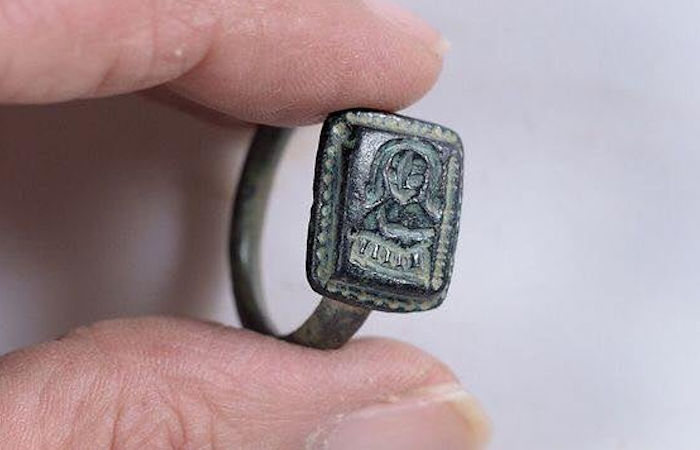Jan Bartek – AncientPages.com – This weekend, Christmas was celebrated worldwide and here in Israel, with decorated fir trees, colorful lights, and of course with hats and figures of the famous bearded man – Santa Claus!
Several years ago, an Israeli gardener named Dekel Ben sнιтrit found an intriguing object in the Jezreel Valley.

Credit: Israel Antiquities Authority
A bronze ring from the Middle Ages bearing the image of St. Nicholas, the inspiration behind the tradition of Santa Claus. Nothing quite like it has been found in Israel before. The artifact may date from after the Crusader period and could have been worn by a pilgrim hoping for the saint’s protection during a journey to the Holy Land.
According to Dr. Yana Tchekhanovets, an expert on Byzantine-era archaeology, the superbly preserved artifact bears the image of a bald man bearing a stick, whom she believes represents St. Nicholas holding a bishop’s staff.
Nicholas was the patron saint of wayfarers, including pilgrims and sailors, in the eastern Christian world, Tchekhanovets explains. Christian pilgrims coming from all over the Byzantine Empire – including Turkey, the Balkans, Greece, and Russia – would often wear icons of Nicholas to ward off trouble, and she says: “This ring could well have belonged to a pilgrim.”
Written by Jan Bartek – AncientPages.com Staff Writer





